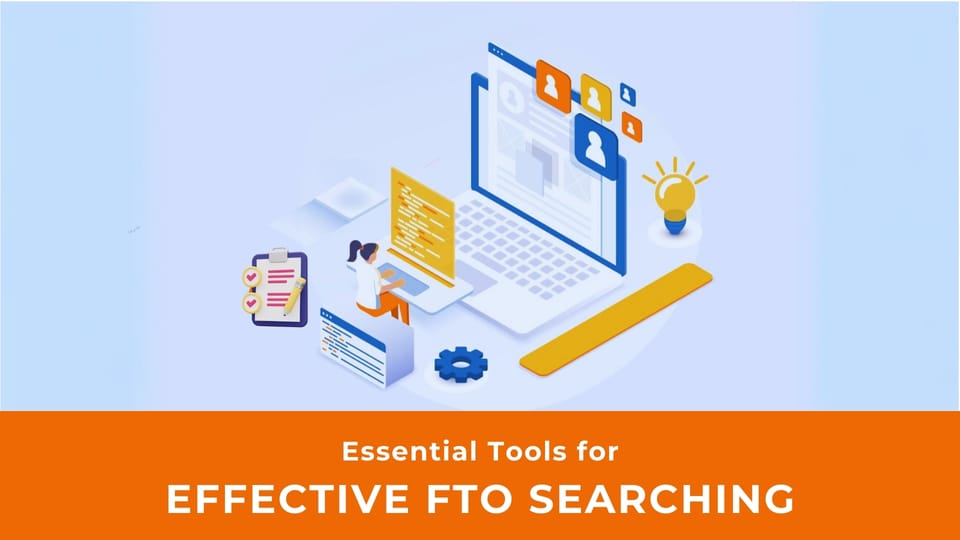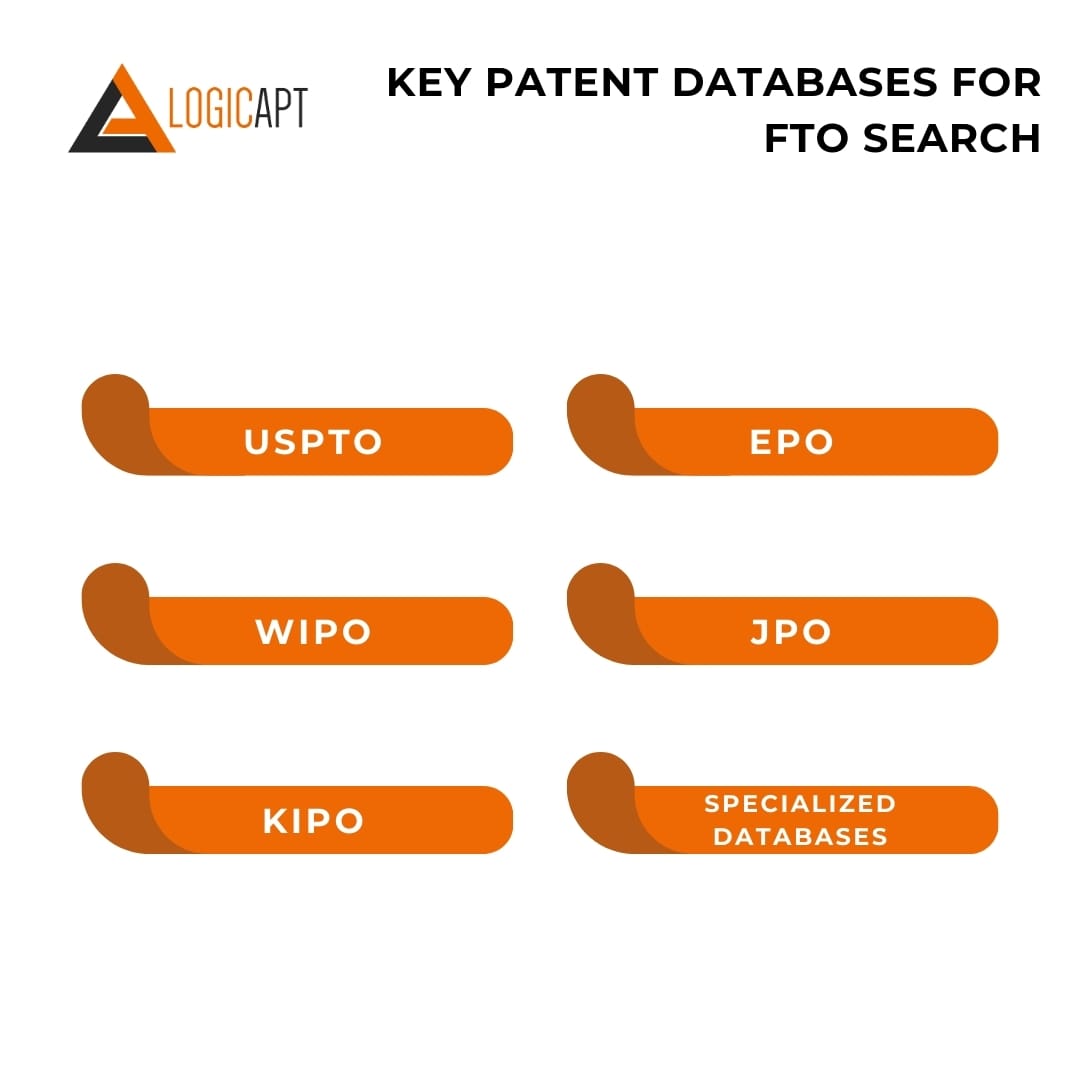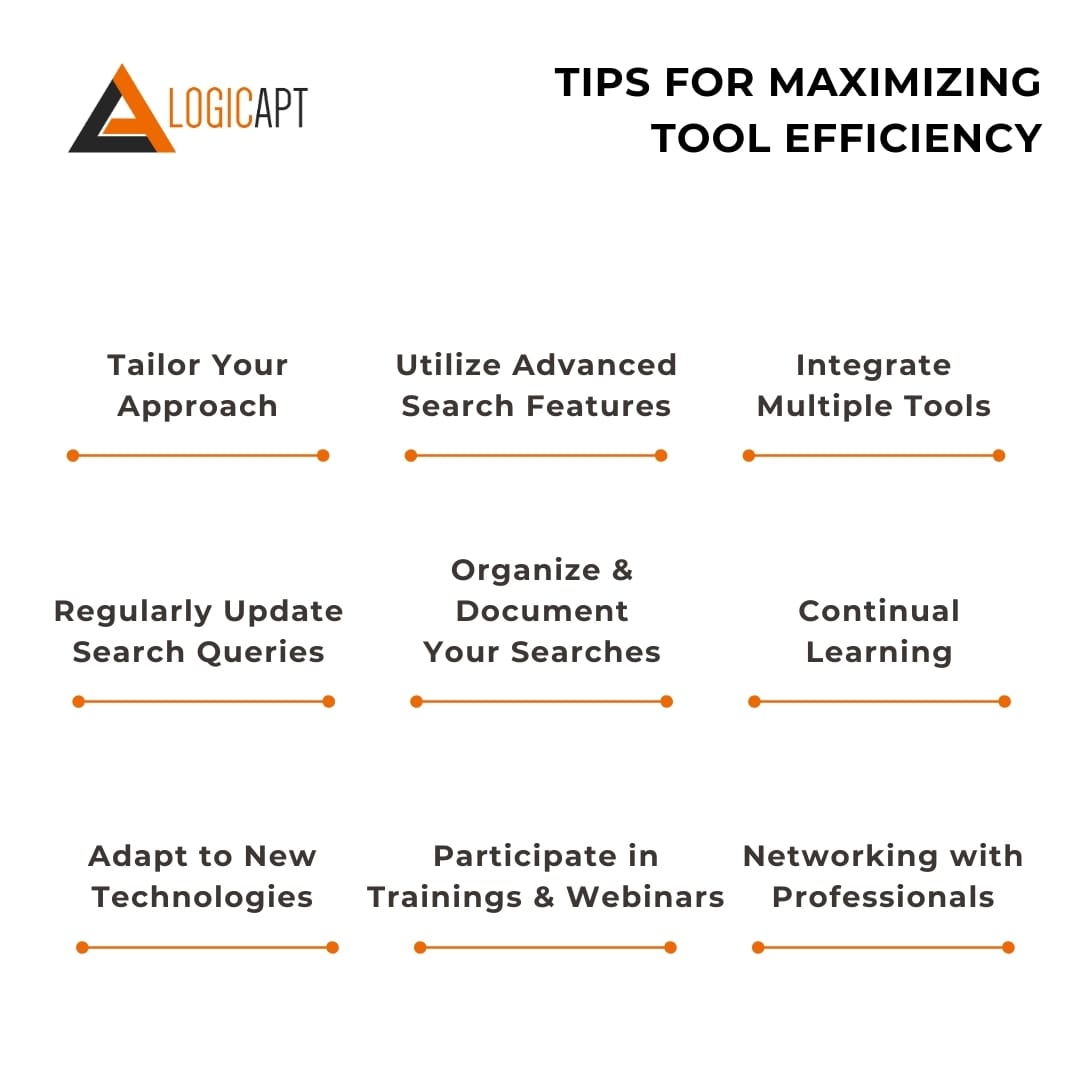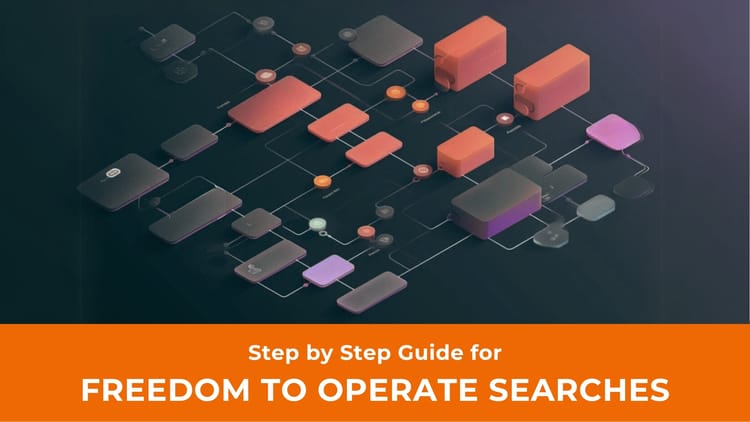Essential Tools for Effective FTO Searching

Introduction: Navigating the Maze of FTO Searches with the Right Tools
In the intricate world of patents and intellectual property, conducting a Freedom to Operate (FTO) search is critical for businesses and innovators. FTO searches involve assessing whether a particular product, process, or service infringes upon the intellectual property rights of others, particularly patents. It's a process that ensures legal compliance and informs strategic business decisions.
The Essence of FTO Searches
FTO searches are more than just a routine check; they are a comprehensive review of the patent landscape relevant to your innovation. This process involves identifying existing patents and applications to determine if your product or service can operate freely without infringing on the IP rights of others. The complexity of these searches arises from patents' vast and ever-evolving nature, making it essential to approach these searches methodically and thoroughly.
The Importance of Using the Right Tools
The effectiveness of an FTO search largely depends on the tools and resources utilized. In this digital age, where the volume of patent documentation is growing, more than relying on traditional search and analysis methods is required. The correct set of tools can significantly enhance your FTO searches' efficiency, accuracy, and comprehensiveness, saving valuable time and resources while minimizing legal risks.
What We Will Cover
This blog will delve into the various indispensable tools for effective FTO searching. From exploring critical patent databases like USPTO, EPO, and WIPO to examining advanced software tools and AI technologies, we will provide insights into how these tools work and why they are crucial in your FTO search arsenal. Additionally, we'll look at the role of non-patent literature and other resources and wrap up with best practices for using these tools effectively.
Whether you are a seasoned patent researcher or new to the field of IP, this guide aims to equip you with the knowledge to navigate the maze of FTO searches confidently and precisely.
Navigating the World of Patent Databases
Understanding and utilizing patent databases is fundamental in conducting Freedom to Operate (FTO) searches. This section provides an overview of what patent databases are, their role in FTO searches, and a closer look at some of the key databases used in the industry.
What Are Patent Databases?
Patent databases are extensive, searchable online repositories of patent documents. These documents include filed patent applications, granted patents, and sometimes even patent litigation information. Various patent offices and organizations around the world maintain these databases.
Their Role in FTO Searches
- Identifying Potential Infringements: Patent databases are the first go-to resource to identify patents that your product or service might infringe upon.
- Comprehensive Coverage: They provide a broad view of the patent landscape, covering various industries and technological fields.
- Informed Decision Making: The information gleaned from these databases aids in making informed decisions about product development, risk management, and market strategy.
Key Patent Databases for FTO

United States Patent and Trademark Office (USPTO)
- Features: Offers detailed search capabilities, including full-text searches of U.S. patents.
- Strengths: Comprehensive database for U.S. patents with frequent updates.
- Limitations: Focuses primarily on U.S. patents, necessitating additional databases for global FTO searches.
European Patent Office (EPO)
- Features: Provides access to patent documents from multiple countries, including European Patent Organisation member states.
- Strengths: Broad coverage, including non-European patents; advanced search features.
- Limitations: It can be complex for beginners due to its extensive scope and detailed search options.
World Intellectual Property Organization (WIPO)
- Features: The PATENTSCOPE database offers access to international Patent Cooperation Treaty (PCT) applications and patents from multiple national offices.
- Strengths: Global coverage, ideal for international FTO searches.
- Limitations: It might need more regional detail depth than national databases.
Additional Databases
- Asian Databases: JPO (Japan) and KIPO (Korea) for region-specific searches in Asia.
- Specialized Databases: Some sectors may have specialized databases, offering detailed information for specific industries.
Leveraging Advanced Search and Analysis Software in FTO
In today’s era of rapid technological advancement, the complexity and volume of patent data necessitate using advanced software tools for effective FTO searches. This section highlights the importance of these tools and reviews some of the leading options available in the market.
Necessity of Advanced Software in FTO
Why Advanced Software Tools are Crucial
- Handling Vast Data: The volume of existing patents and daily new filings is immense. Advanced software can process and sift through this data efficiently.
- Accuracy and Precision: These tools offer sophisticated algorithms and search capabilities that enhance the accuracy and relevance of search results.
- Time Efficiency: Conducting thorough manual FTO searches is time-consuming. Software tools significantly reduce the time required for these searches.
- Analysis and Reporting: Besides searching, these tools often provide analysis and reporting features, aiding in interpreting and presenting search results.
Review of Leading Software Tools
PatBase
- Overview: Developed jointly by Minesoft and RWS, PatBase is a comprehensive patent database and search tool.
- Features:
- Extensive global patent coverage.
- Advanced search capabilities, including semantic search and analytics.
- User-friendly interface with collaborative features for teams.
- Functionality in FTO: Ideal for conducting thorough initial searches and ongoing monitoring of relevant patent spaces.
Orbit Intelligence
- Overview: A product by Questel, Orbit Intelligence is a robust patent search and analysis tool.
- Features:
- Strong in analytics and visualization tools.
- Offers features for competitor tracking and technology landscape analysis.
- Integration capabilities with other IP management tools.
- Functionality in FTO: Useful for in-depth analysis of patent data and strategic planning in FTO contexts.
Additional Tools
- Other Tools: Tools like Thomson Innovation and the Derwent World Patents Index (DWPI) also provide extensive patent information and search capabilities.
- Choosing the Right Tool: The choice of tool depends on specific needs, such as the scope of the search, required features, and budget considerations.
Embracing AI and Machine Learning in FTO Searches
Integrating Artificial Intelligence (AI) and Machine Learning (ML) in FTO searches represents a significant leap forward in conducting patent searches and analyses. This section explores the transformative impact of these technologies and reviews some of the leading AI tools reshaping FTO searches.
The Rise of AI in FTO Searches
How AI and Machine Learning are Changing FTO Searches
- Automating Complex Tasks: AI algorithms can automate the process of sifting through vast amounts of patent data, making searches faster and more efficient.
- Enhanced Accuracy: Machine learning models improve over time, learning to identify the most relevant patent information with increasing accuracy.
- Predictive Analytics: AI tools can provide predictive insights, identifying potential patent infringement risks before they become problematic.
- Semantic Analysis: These technologies are adept at understanding the context and nuances of language used in patents, leading to more precise search results.
AI Tools for Enhanced FTO Searches

LexisNexis IP
- Overview: A powerful tool for legal research, including patent searches and analytics.
- Capabilities:
- It has advanced data analytics for assessing patent strength and litigation risks.
- AI-driven insights for strategic decision-making in IP management.
- Benefits in FTO: Provides a comprehensive analysis of potential legal challenges and opportunities in the patent landscape.
Innography
- Overview: A sophisticated IP search and analysis tool known for using advanced analytics.
- Capabilities:
- High-precision patent search and analysis capabilities.
- Integration of patent data with business information for strategic insights.
- Benefits in FTO: Ideal for aligning patent strategy with business objectives and identifying key IP opportunities and risks.
Additional AI Tools
- Other Notable Tools: AI tools like CPA Global and IPlytics offer unique IP search and strategy features.
- Tool Selection: When selecting an AI tool, consider factors like the specific AI capabilities offered, the tool's integration with existing systems, and the level of support and training provided.
The Integral Role of Non-Patent Literature in FTO Searches
While patent databases and AI tools are pivotal in FTO searches, non-patent literature (NPL) and other resources also play a crucial role. This section emphasizes the importance of NPL in FTO searches and highlights additional valuable resources that can provide comprehensive insights.
The Role of Non-Patent Literature
Importance in FTO Searches
- Complementing Patent Data: NPL can fill the gaps left by patent searches, providing broader context and additional technical details.
- Avoiding Infringement: NPL can help identify existing public knowledge or prior art, which is essential to avoid patent infringement and strengthen patentability.
- Industry Trends and Developments: Keeping abreast of the latest industry trends and technological advancements, often captured in NPL, is vital for practical FTO analysis.
Sources and Examples of Non-Patent Literature
- Scientific Journals and Publications: Articles and papers from fields relevant to your technology can provide detailed technical information.
- Conference Proceedings: Often contain cutting-edge research and developments yet to be patented.
- Technical Reports and Standards: Provide insights into industry norms, technical specifications, and best practices.
- Government Publications: Reports and publications from government research can offer valuable information, especially in fields like healthcare and energy.
Other Valuable Resources
Leveraging Industry Journals and Technical Papers
- Keeping Up with Innovation: Industry journals and technical papers are excellent sources for staying updated with your field's latest innovations and research.
- Understanding the Competitive Landscape: These resources can provide insights into competitors' focus, helping you navigate potential IP conflicts.
Additional Tools and Databases
- Google Scholar: A freely accessible search engine indexes scholarly articles from various disciplines.
- ResearchGate and Academia.edu: Platforms that provide access to various academic papers and publications.
- Technical Libraries and Databases: Certain industries may have dedicated libraries or databases offering specialized technical and research information.
Mastering FTO Tools: Best Practices for Maximum Efficiency
Having explored various tools and resources crucial for FTO searches, it's essential to understand how to use them effectively. This final section provides practical tips to maximize the efficiency of these tools and emphasizes the importance of staying updated and adaptable in the ever-evolving landscape of FTO searches.
Tips for Maximizing Tool Efficiency

Practical Tips for Getting the Most Out of FTO Search Tools
- Tailor Your Approach: Different tools have different strengths. Tailor your approach based on the specific features of each tool. For instance, use databases like USPTO for initial broad searches and specialized software for deeper analysis.
- Utilize Advanced Search Features: Fully use advanced search features like Boolean operators, filters, and semantic search capabilities to refine your results.
- Integrate Multiple Tools: Combine the strengths of various tools. For example, use AI tools for initial scanning and patent databases for detailed exploration.
- Regularly Update Your Search Queries: As projects progress, refine and update your search queries to reflect new developments and insights.
- Organize and Document Your Searches: Maintain precise records of your searches, including databases used, search queries, and critical findings.
Staying Updated and Adaptable
- Continual Learning: The field of FTO and IP is constantly evolving. Stay informed about the latest tools, techniques, and legal developments.
- Adapt to New Technologies: Be open to integrating new technologies, such as AI and machine learning tools, into your FTO search processes.
- Participate in Training and Webinars: Many tool providers offer training sessions and webinars. Participate in these to understand the full capabilities of the tools and stay current.
- Networking with Professionals: Engage with other IP professionals and experts to share insights and learn how they leverage different tools effectively.
Conclusion: Harnessing the Power of Effective Tools in FTO Searches
As we conclude our exploration into the tools and techniques essential for Freedom to Operate (FTO) searches, it’s important to reflect on the key takeaways and the pivotal role these resources play in navigating the complex world of patents and intellectual property.
The Crucial Role of the Right Tools
FTO searches are integral to innovation, ensuring new products or services can enter the market without infringing existing intellectual property rights. The correct set of tools – from comprehensive patent databases to advanced AI-driven software – is crucial in this endeavor. They provide the means to:
- Efficiently sift through vast amounts of patent data.
- Analyze and interpret complex legal and technical information.
- Stay ahead of potential IP challenges and opportunities.
Staying Effective and Efficient
In a domain as dynamic and intricate as intellectual property, staying effective and efficient in your FTO searches is not just about having access to the best tools; it’s about how you use them:
- Adapt and Evolve: The landscape of IP and patent law is continuously evolving, as should your strategies and tools for FTO searches.
- Leverage Technology: Embrace the advancements in AI and machine learning to enhance the depth and speed of your searches.
- Continuous Learning: Stay informed about new FTO search tools and techniques developments. Regular training and engagement with the IP community are invaluable.
- Systematic Approach: Develop a systematic approach to FTO searches, combining various tools and resources for a comprehensive analysis.
In summary, the effectiveness of your FTO searches hinges not only on the tools you choose but also on how adeptly you wield them. By staying informed, adaptable, and strategic in your approach, you can turn the challenge of FTO searches into an opportunity for innovation and success. Remember, knowledge is not just power in intellectual property – it's protection.




